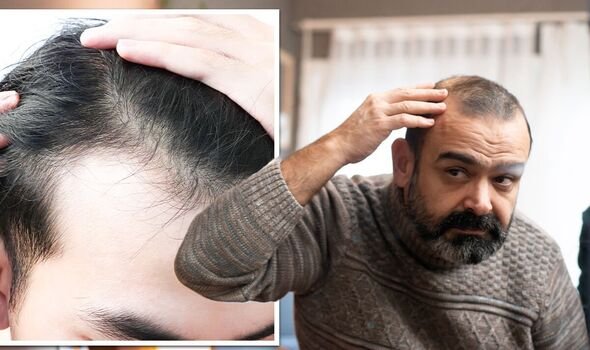Hair loss in men is often caused by androgenetic alopecia (male pattern baldness), a hereditary condition linked to hormones and genetics. While this type of hair loss is progressive, it can be slowed, halted, and even reversed in some cases with the right medical treatments.
Among the most widely used and researched treatments are:
- Minoxidil (topical solution or foam)
- Finasteride (oral DHT blocker)
- Platelet-Rich Plasma (PRP) therapy (injectable regenerative treatment)
Each treatment works in different ways, has distinct benefits, and may suit different individuals depending on the stage and type of hair loss.
🧪 Overview of Each Treatment
1. Minoxidil (Rogaine)
- Type: Over-the-counter topical solution or foam
- FDA-approved: Yes (for both men and women)
- Mechanism: Vasodilator that increases blood flow to hair follicles, prolonging the growth (anagen) phase
Pros:
- Easy to purchase and use daily
- Proven to slow hair loss and stimulate regrowth (especially in the crown area)
- Minimal systemic side effects
Cons:
- Results vary; less effective for hairline or advanced balding
- Must be used continuously — hair loss resumes if stopped
- Can cause scalp irritation or “shedding phase” early on
- Results take 3–6 months to become noticeable
Best For:
- Early-to-moderate male pattern hair loss (especially vertex/crown)
- Men who prefer non-prescription, non-invasive options
2. Finasteride (Propecia)
- Type: Oral prescription pill (1 mg daily)
- FDA-approved: Yes (for male pattern baldness)
- Mechanism: Inhibits 5-alpha-reductase, reducing DHT (dihydrotestosterone) — the hormone responsible for miniaturizing hair follicles
Pros:
- Highly effective at halting hair loss at the crown and mid-scalp
- Slows or stops hair thinning in about 80–90% of men
- Can also promote regrowth over time
Cons:
- Requires a prescription
- Risk of sexual side effects in 1–3% of users (decreased libido, ED)
- Long-term use needed for sustained benefits
- Not recommended for women of childbearing age
Best For:
- Men with a strong family history of genetic hair loss
- Early or moderate-stage androgenetic alopecia
- Those willing to commit to long-term use and regular monitoring
3. Platelet-Rich Plasma (PRP) Therapy
- Type: Injectable regenerative treatment
- FDA-approved: No (for hair loss), but widely used off-label with growing research support
- Mechanism: Uses the patient’s own blood, processed to concentrate growth factors, which are then injected into the scalp to stimulate follicle repair and growth
Pros:
- Drug-free and minimally invasive
- Stimulates natural hair growth and thickens existing hairs
- Little to no downtime
- Can be combined with minoxidil or finasteride for enhanced results
Cons:
- Requires 3–4 initial sessions spaced ~4 weeks apart, followed by maintenance every 4–6 months
- Can be costly ($500–$1500+ per session)
- Not effective for bald or scarred areas with no follicles
- Results vary based on individual biology
Best For:
- Men with early-to-moderate thinning
- Those who want a natural, regenerative option
- Ideal complement to other treatments (especially in a multimodal plan)
📊 Side-by-Side Comparison Table
| Feature | Minoxidil | Finasteride | PRP Therapy |
|---|---|---|---|
| Type | Topical (OTC) | Oral (Rx only) | Injectable (in-office) |
| FDA Approved | ✅ Yes | ✅ Yes | ❌ No (off-label use) |
| Mechanism | Improves scalp circulation & follicle activity | Lowers DHT levels | Stimulates follicles with growth factors |
| Effectiveness | ⭐⭐⭐ | ⭐⭐⭐⭐ | ⭐⭐⭐ (variable) |
| Areas Most Effective | Crown, mid-scalp | Crown, mid-scalp | Overall scalp (if follicles remain) |
| Time to See Results | 3–6 months | 3–6 months | 2–4 months (with series) |
| Side Effects | Scalp irritation, shedding | Sexual side effects (rare), depression | Mild pain, bruising |
| Maintenance | Daily use required | Daily use required | Every 4–6 months |
| Cost | 💲 (low) | 💲 (moderate) | 💲💲💲 (high) |
| Ideal Candidate | Men with early hair loss | Men with DHT-related loss | Men seeking natural, drug-free approach |
💡 Expert Tips: Choosing the Right Treatment
- Start early
All three treatments work best when hair follicles are still active. Early intervention is key to preserving and restoring hair. - Combination therapy is often best
Many doctors recommend using minoxidil + finasteride together or pairing either one with PRP for faster and more visible results. - Customize your approach
Your age, family history, health status, and personal comfort with risks will all affect which treatment — or combination — is best for you. - Monitor your progress
Take monthly photos, and schedule check-ins with your dermatologist or hair loss specialist every 3–6 months to assess results and adjust your plan.
🧑⚕️ Real-World Example Treatment Plans
- Early Thinning (Ages 20–35)
→ Finasteride 1 mg + Minoxidil 5% foam + PRP (optional) - Crown Bald Spot (Moderate)
→ Minoxidil 5% + PRP + Microneedling - Finasteride Intolerant Patients
→ Topical finasteride + Minoxidil + PRP or LLLT (Low-Level Laser Therapy)
📌 Final Thoughts
Each man’s hair loss journey is unique. Whether you’re just starting to notice thinning or looking for a way to restore density, Minoxidil, Finasteride, and PRP each offer valuable benefits. Understanding how they work — and how they complement each other — empowers you to make informed decisions that align with your goals.




